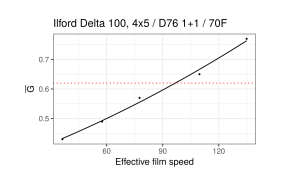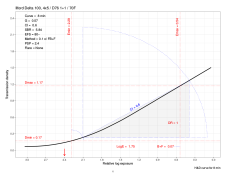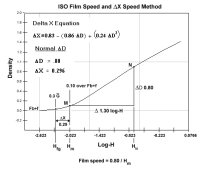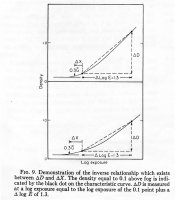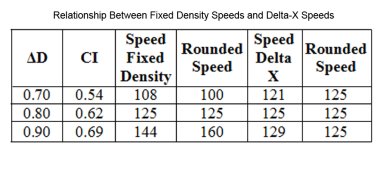Doc W
Member
I am a little confused as to the meaning of "effective film speed" in Lambrecht's method of film testing. He uses box speed in testing for development times. Once these have been established, he tests for EI by using the typical grey card method until he gets a density of 0.17 (Zone 1.5). This is his Normal EI.
I noticed that when I plug different EI's into his spreadsheet, it has a dramatic effect on "effective film speed" for the various develop times. Without arguing about whether he is correct (I REALLY REALLY don't want another zone system donnybrook), what does one do with this in the field? If I find a subject that requires N-1 development, do I meter the scene using the corresponding effective film speed? Or do I just shoot at the Normal EI? If so, what is the purpose of the other effective film speeds.
IIRC, Adams' method first determines the EI and then finds development times using that EI. Lambrecht establishes development time using box speed, the other way around.
I have an APUG friend who has been trying to explain all this to me but when it comes to math and curves, I am a little thick. I am hoping that another explanation may open up my understanding. It may just confuse me more, but then I will be no worse off.
Once again, please, no zone system wars.
I noticed that when I plug different EI's into his spreadsheet, it has a dramatic effect on "effective film speed" for the various develop times. Without arguing about whether he is correct (I REALLY REALLY don't want another zone system donnybrook), what does one do with this in the field? If I find a subject that requires N-1 development, do I meter the scene using the corresponding effective film speed? Or do I just shoot at the Normal EI? If so, what is the purpose of the other effective film speeds.
IIRC, Adams' method first determines the EI and then finds development times using that EI. Lambrecht establishes development time using box speed, the other way around.
I have an APUG friend who has been trying to explain all this to me but when it comes to math and curves, I am a little thick. I am hoping that another explanation may open up my understanding. It may just confuse me more, but then I will be no worse off.
Once again, please, no zone system wars.





